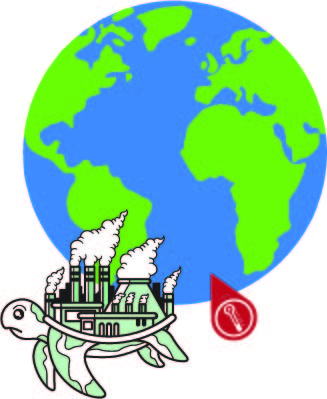Pioneer Talks: On Climate Change
Forecasting the Winds of Change on Global Warming & Solutions
Dr. Ankur Desai, a professor in UW-Madison’s Department of Atmospheric and Oceanic Sciences, gave a Pioneer Talk last Wednesday. Desai discussed evidence of climate change over the years, its impact both globally and locally and what the future of climate change might look like.
Desai confronted several misconceptions that the general public typically have about climate change, one of them being the idea that climate change has only recently been established as a concern.
“Scientific advice to government about the effects of CO2 and climate is not a new thing,” Desai said.
Desai shared several pieces of evidence about the history of the climate change discussion. One was a statement from Lyndon B. Johnson’s science advisory on the effects of fossil fuels on climate from the year 1966. Another was a headline from a New Zealand newspaper that discussed the impact of burning coal on the atmosphere, taken from 1912.
“Climate is the average of weather,” Desai said.
After looking at the data for average temperature change in Southwestern Wisconsin, the difference over many years was not highly noticeable.
“Climate change is not just about averaging over time, but also about averaging across space,” Desai said.
When the temperatures that were anomalous from the expected average are plotted for the whole world, colder than average days across the globe become almost non-existent. Everywhere on Earth is getting warmer than its average, he said.
The Earth is not warming evenly, either.
“The Arctic is warmer than the mid-latitudes… relative to its long-term average. The Arctic is warming about twice as fast,” Desai said.
Desai also touched on the greenhouse effect. As water and CO2 absorb infrared radiation, they warm the air and, in turn, the ground. The warmer it is on Earth, the more infrared radiation that is emitted.
“It keeps going; it’s a cycle: until you reach a point where the amount of energy going down into the Earth is matched by the energy going out. That’s called the greenhouse effect,” Desai said.
As the surface of the Earth warms, the upper atmosphere cools. Another effect is an increase in the speed of the water cycle, as more water evaporates when the temperature increases.
One recent impact of this changing climate came out of the Australia wildfires in 2019. About four to five percent of forests in Australia burn every year, but the wildfires that ravaged Australia last year burned five times that amount. Twenty percent of Australia’s forests burned down last year.
What kind of impact does this change have locally? Crops have a range of temperatures in which they are able to grow optimally. Desai used the examples of corn and soy, two of the United States’ most-grown crops.
The projected five-day maximum temperature for northern Minnesota is expected to increase by 5 degrees by the mid-21st century for lower estimates, and 7 degrees for upper estimates.
Another way to think about it is, you are basically moving Wisconsin to Missouri or to Arkansas. This change in temperature puts stress on crops that have to grow within a certain temperature range.
Desai offers two scenarios that will allow us to change this trajectory: adaptation and mitigation.
The initial reaction may be to lean more towards mitigation, and make reducing emissions our main focus.
“The problem is, the atmosphere takes time to respond, the oceans take time to respond even more,” Desai said.
Even by stopping all fossil fuel emissions today, the climate would warm by about a degree over the next 50 years.
Adaptation to climate change comes in many forms. Things like reducing poverty can be effective at removing the vulnerability of those who would be hurt by climate change. Relocation and technology changes are also methods for adapting to the changing climate.
In terms of mitigation, “There is no one solution to climate change, but there’s lots and lots of little solutions that add up to big changes.” Each change to an industry or to a method of energy production doesn’t change carbon emissions drastically, but they do add up.
Desai ended the presentation with a video of eucalyptus trees reemerging from the burnt ground in Australia.
“The planet can heal. The planet knows how to heal. We, as humans, have a responsibility to help usher that forward,” Desai said.




